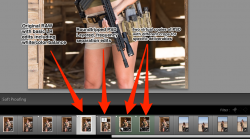Conform LR to how I work in Aperture, which is probably mistake no. 1.
In Aperture, everything is contained to a project. Smart searches, albums, folders with sub-items, etc can all be at the project level. ...
Have you looked at Collection Sets? You can tuck Smart Collections, Saved Print jobs, Saved Web Pages, and of course Collections into a Collection Set.
I basically ignore the Folders in LR, with exceptions. I let LR use its default Year/Month-Day folder structure. The only time I 'change' the Folders is when I have to create a new top Year Folder in January. All of my other organizing is based on Collections Sets, Collections, etc.



